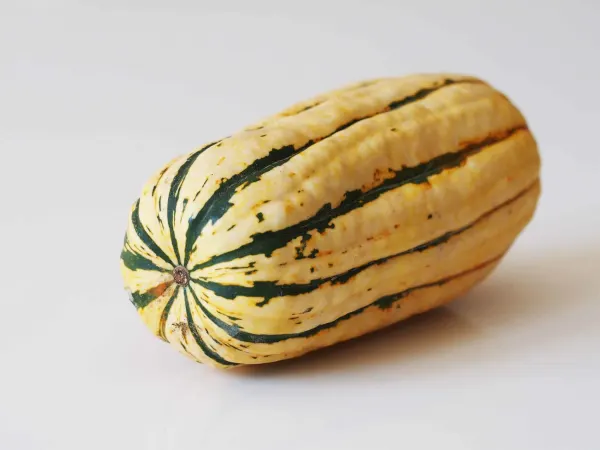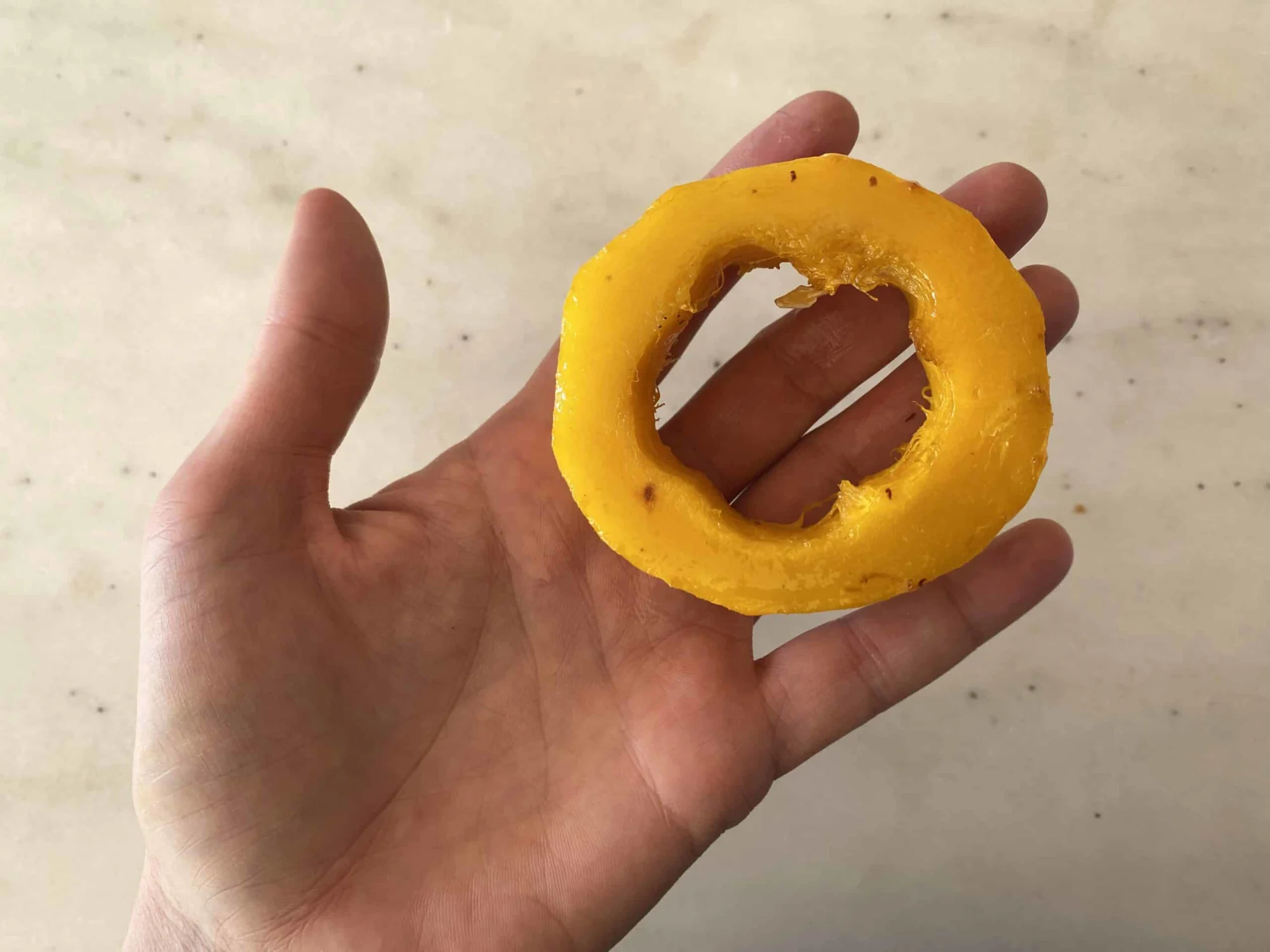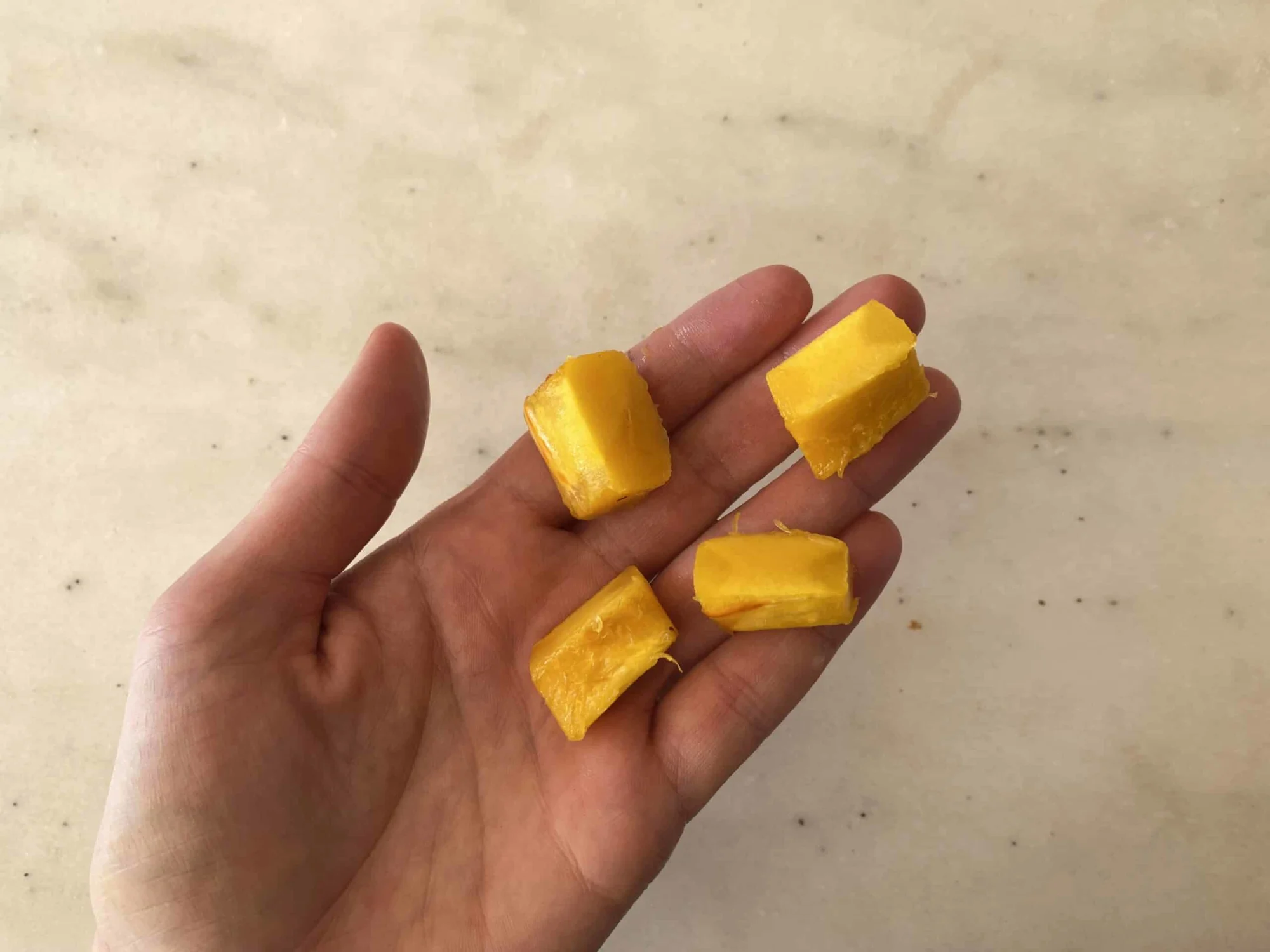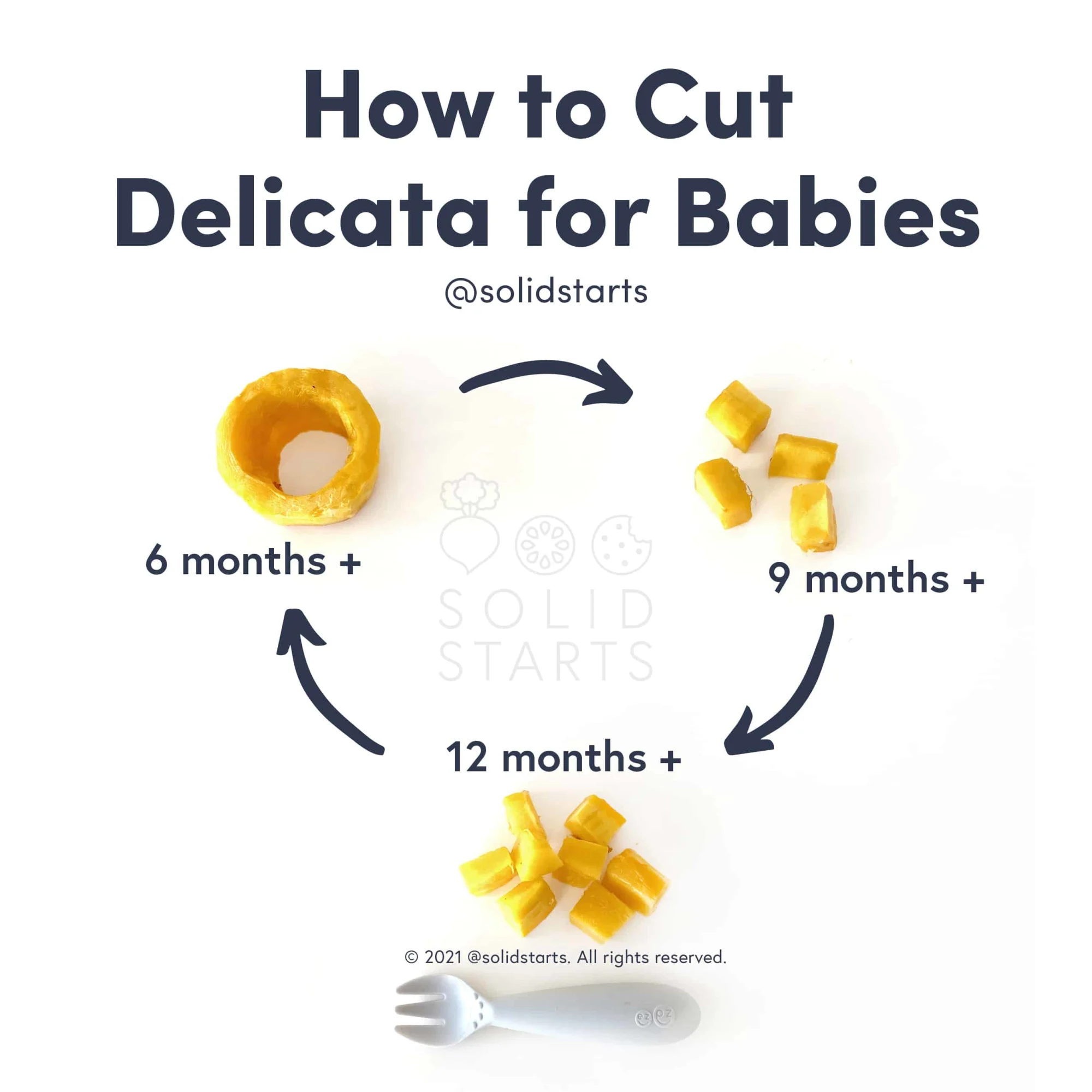Delicata Squash
Vegetable
Age Suggestion
6 months
Iron-Rich
No
Common Allergen
No

When can babies eat delicata squash?
Delicata squash may be introduced as soon as baby is ready to start solids, which is generally around 6 months of age.
Where does delicata squash come from?
Like other members of the prolific squash family, delicata squash originated in the Americas. Delicata is a variety of winter squash, which means it matures later in the growing season and has a relatively long shelf-life. While many winter squashes have a thick skin that is challenging to chew, the delicata squash has a pale yellow, striped skin that is much thinner and easier to eat when the squash is cooked. Inside is golden-hued flesh, which offers a mildly sweet flavor and creamy consistency to sweet and savory dishes alike.
Videos
Is delicata squash healthy for babies?
Yes. Delicata squash offers excellent amounts of fiber, folate, vitamins B6 and A, as well as magnesium and vitamin C. Together, these nutrients support baby’s flourishing gut microbiome, neurodevelopment, metabolism, immunity, skin health, and plenty more. In particular, the vitamin C in delicata squash helps baby more effectively absorb iron from iron-rich plant-based foods like beans, nuts, and seeds.
Delicata squash also provides plant compounds called carotenoids (specifically beta-carotene, lutein, and zeaxanthin), which our bodies convert to vitamin A. These compounds support visual health and offer antioxidant and anti-cancer properties.
★Tip: While whole winter squashes with thicker skin like kabocha squash can last for months at room temperature, delicata squash has a shorter shelf-life. It is best used within a week or two after purchase.
Is delicata squash a common choking hazard for babies?
No, although undercooked or raw delicata squash could pose a risk. To minimize the risk, cook delicata squash until it is completely soft and easily mashes with light pressure. The skin, while not typically a choking hazard, is challenging to chew and digest, so feel free to remove it if you like. As always, make sure you create a safe eating environment and stay within an arm’s reach of baby during meals. For more information on choking, visit our sections on gagging and choking and familiarize yourself with the list of common choking hazards.
Is delicata squash a common allergen?
No. Allergies to ingestion of winter squashes, such as delicata squash, are uncommon but have been reported. People who are allergic to ragweed pollen and/or other fruits and vegetables in the Cucurbitaceae family may also be sensitive to winter squashes, such as delicata squash, or experience Oral Allergy Syndrome (also known as pollen food allergy syndrome). Oral Allergy Syndrome typically results in short-lived itching, tingling, or burning in the mouth and is unlikely to result in a dangerous reaction. Cooking, canning, and/or peeling squashes (as applicable) may help minimize and even eliminate the reaction.
As with introducing any new food, start by serving a small quantity for the first few servings. If there is no reaction, increase the amount over future meals.
Can delicata squash help babies poop?
Yes. Delicata squash contains fiber and fluid, which help support healthy gut bacteria, bulk up poop, and hydrate the intestines for healthy digestion and bowel movements. To minimize digestive discomfort, gradually introduce high-fiber foods like squash before regularly including it in baby’s diet. A little gassiness or a few blowouts means that baby’s digestive system is adjusting, and it is likely not a sign that squash needs to be removed from the diet. Remember that pooping patterns can vary significantly from baby to baby. If you have concerns about baby’s pooping and digestive function, talk to your pediatric healthcare provider.
How do you prepare delicata squash for babies with baby-led weaning?
Every baby develops on their own timeline, and the suggestions on how to cut or prepare particular foods are generalizations for a broad audience.
6 months old+:
Cut the squash into rings or half-moon shapes (with the edible skin peeled or kept on), remove the seeds, and make sure to thoroughly cook the squash. It should be soft enough that it easily mashes under light pressure. You can also mash cooked delicata squash for baby to scoop.
9 months old+:
Serve cooked squash rings (seeds removed and edible skin kept on or peeled) for baby to practice picking up, holding, and biting. When you see signs of the developing pincer grasp (where the thumb and pointer finger meet), try moving down in size by serving bite-sized pieces of cooked squash with the peel removed to minimize the risk. If the smaller pieces make you nervous, offer mashed squash alongside a spoon for utensil practice.
12 months old+:
Serve bite-sized pieces, squash rings, or mashed delicata squash (with the edible skin kept on or peeled) on their own, or as part of a meal. This is also a great age for utensil practice. Simply pre-load an age-appropriate utensil and rest it next to the food for the child to pick up. Try not to apply too much pressure—consistent and accurate utensil use will come in due time—probably closer to age 3.


Discover some new favorite meals for the whole family with our guide, 75 Lunches for Babies & Toddlers.
By
Expert Tips Delivered to Your Inbox
Sign up for weekly tips, recipes and more!
The content offered on SolidStarts.com is for informational purposes only. Solidstarts is not engaged in rendering professional advice, whether medical or otherwise, to individual users or their children or families. No content on this site, regardless of date, should ever be used as a substitute for direct medical advice from your doctor or your medical or health professional, nutritionist, or expert in pediatric feeding and eating. By accessing the content on SolidStarts.com, you acknowledge and agree that you are accepting the responsibility for your child’s health and well-being. In return for providing you with an array of content “baby-led weaning” information, you waive any claims that you or your child may have as a result of utilizing the content on SolidStarts.com.








